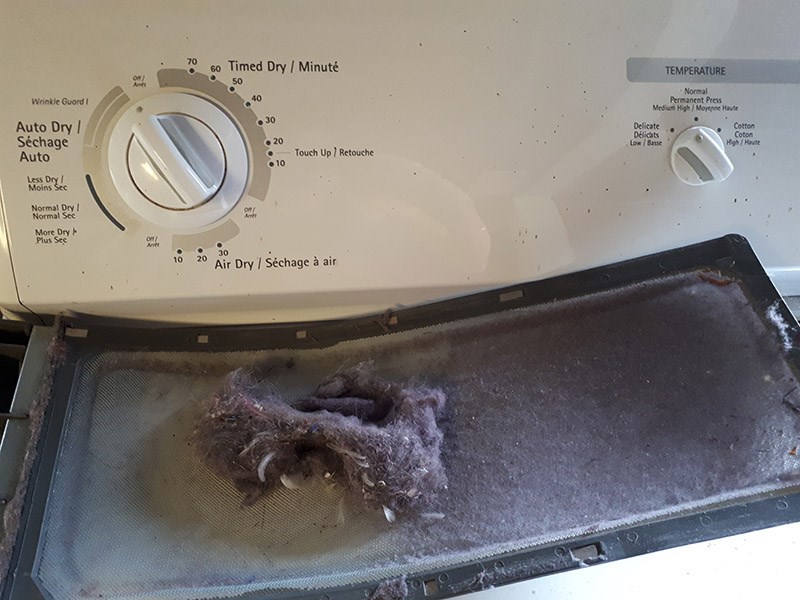At the end of a large pile of laundry, there is often a fluffy batch of dryer lint. You may have contemplated just how it got into the lint trap in the first place. What exactly is that giant dust bunny made of?
Your lint catcher is busily filtering out tiny filaments of your sweaters, blankets and other textiles that are getting dried and fluffed. And, because much of what we wear these days contains synthetic fibers, that is what we end up with on laundry day.
Going under different names such as polyester, nylon, fleece and acrylic, synthetic fibres are polluting our water and soil. Until reading this article, some of you fastidious composters out there may have been tossing your lint into your compost pile, believing it was made of organic materials. But even though it looks compostable, it should not be added to the soil, unless you are planning on growing plastic food.
It turns out that the landfill is the most appropriate place for lint. Even at a municipal level, dryer lint is not accepted at certified composting facilities for the same reasons.
What about when clothes are agitated about in your washing machines? It has been estimated that 2,000 polyester fibres can be released from a single fleece sweater in one wash cycle.
Curious to know the global scope of this problem, Dublin ecologist Mark Browne had colleagues from all six continents scoop sand from 18 beaches. In the lab, they painstakingly separated out plastic from the sand, handpicking out any textile fibres. 80 per cent of the filaments found were synthetic and each cup of sand contained between two and 31 fibre filaments.
These small bits of the cloth entering our waterways end up in our oceans looking deceptively like food to marine life. Microplastics act as magnet for harmful chemicals in the water, so when ingested, plankton, crustaceans and fish are being toxified. Once they end up on our plates, we are also being exposed to these not so tasty morsels.
Minimize your contribution to the ocean of microplastics impacting the planet by air drying your laundry this summer. You’ll save on electricity, too.
Better yet, start checking the labels of the clothing that comes into your life. Try to favour natural clothing that is wool, silk, linen and cotton, as they are free of synthetic microplastics.
Let’s Talk Trash is contracted by qathet Regional District to deliver its waste reduction education program. For more information, email [email protected] or go to LetsTalkTrash.ca.



